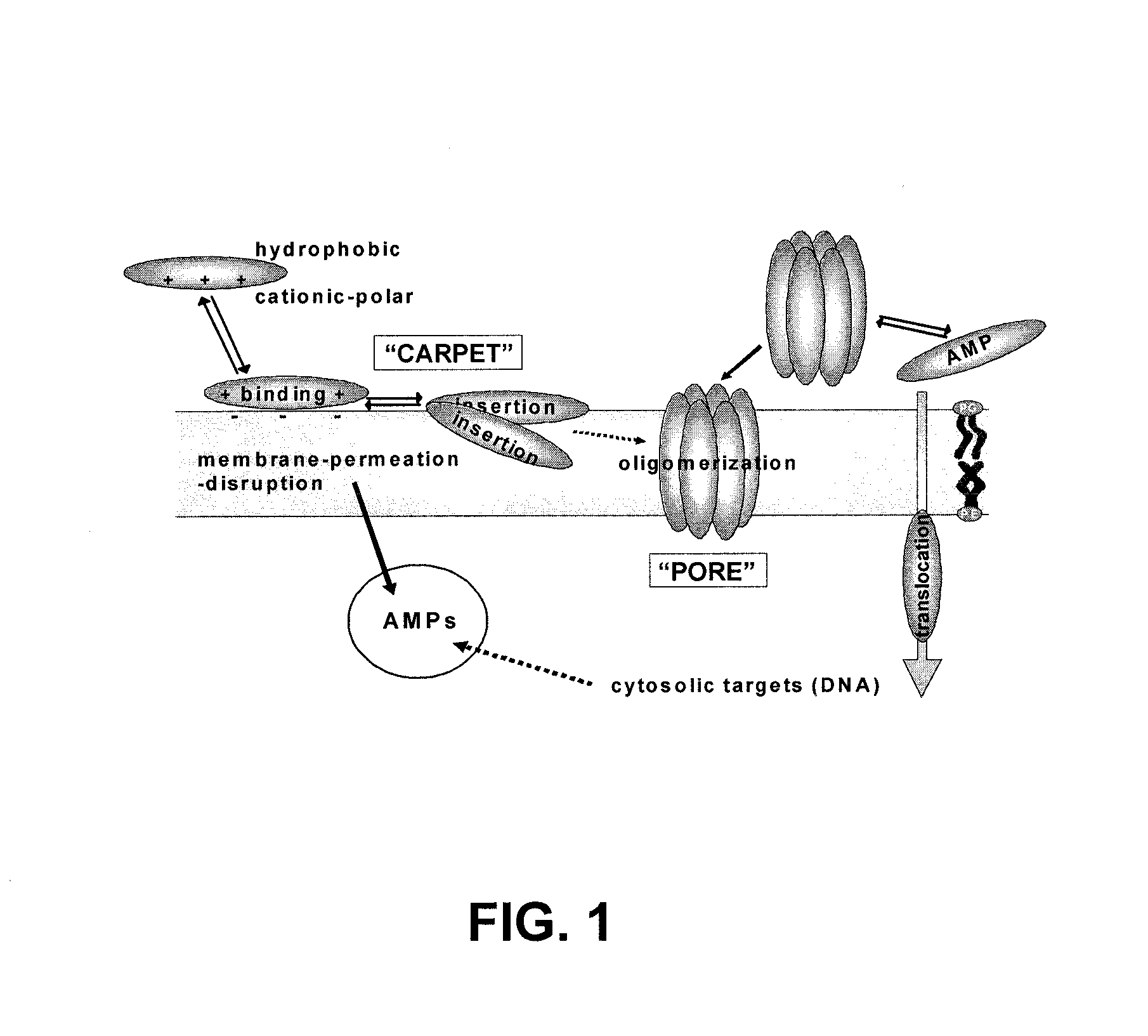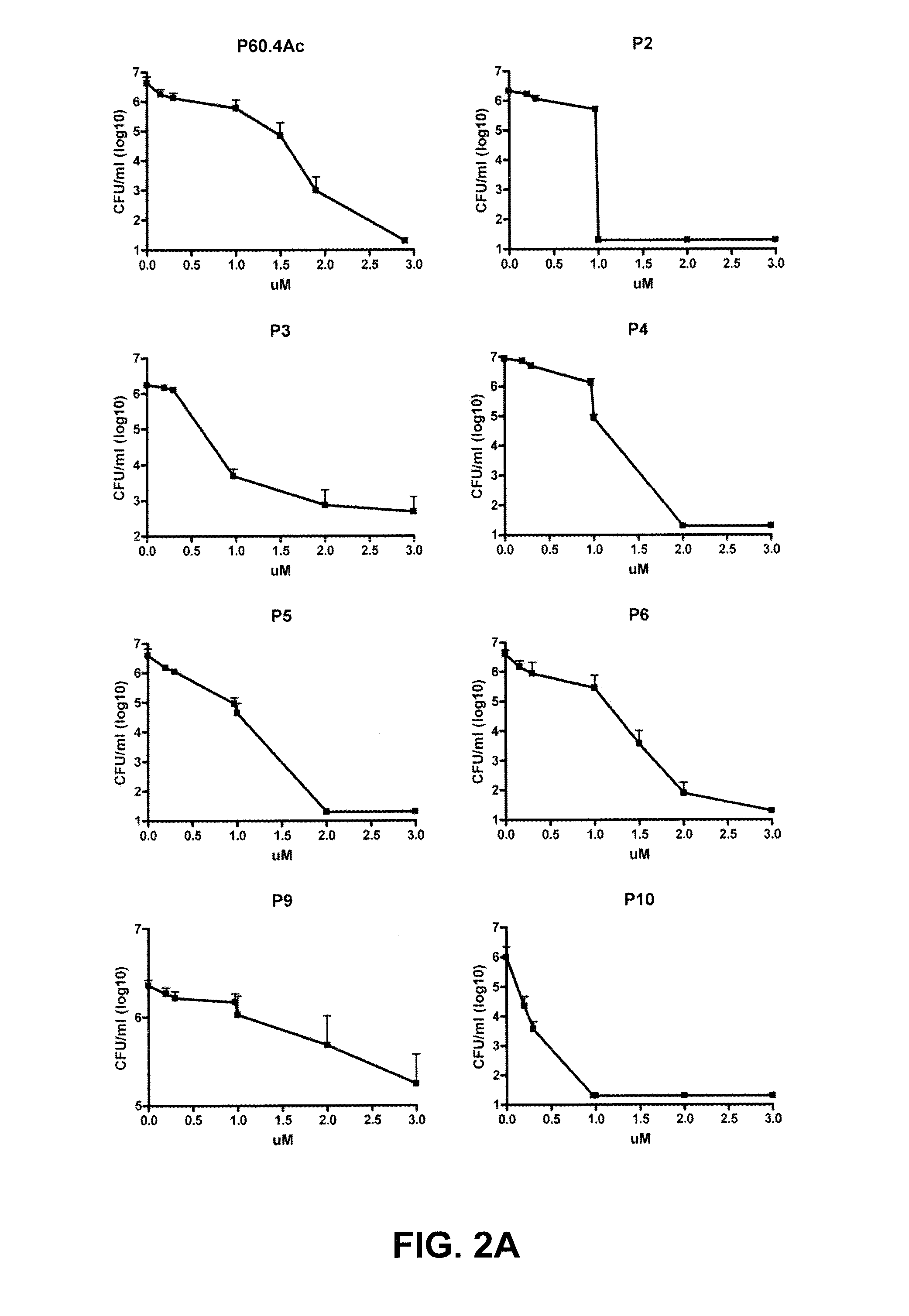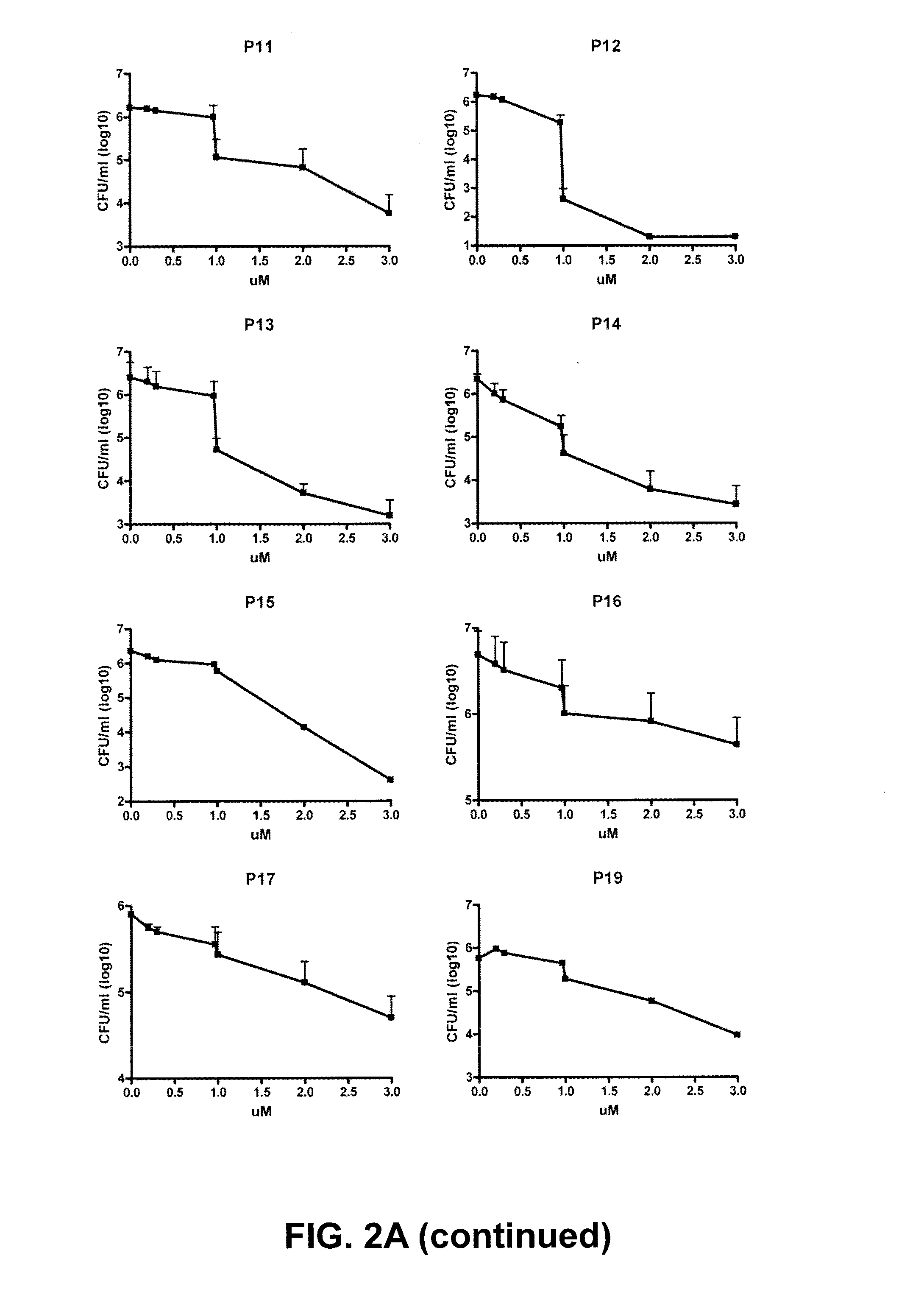It is generally accepted that the cytoplasmic membrane is the main target of most
antimicrobial peptides, whereby accumulation of
peptide in the membrane causes increased permeability and loss of
barrier function, resulting in leakage of cytoplasmic components and
cell death.
In the carpet model, AMPs accumulate on the
membrane surface oriented in a parallel fashion to the membrane, resulting in local membrane
thinning and destabilization of the
cell membrane leading to the release of
intracellular content.
Moreover, some AMPs pass the
cell membrane and interact with an
intracellular target (FIG. 1), leading to loss of bacterial / fungal viability.
1) Insufficient penetration of conventional
antibiotics into biofilms: The matrix in which
bacteria are embedded protects them from external influences, such as
antimicrobial substances. Most
antibiotics are able to penetrate the
biofilm, but their
diffusion into the
biofilm is slow so that they are inactivated before they can elicit their desired effect.
2) Low
metabolic activity of
bacteria:
Biofilm-associated infections (BAI) are usually treated with
vancomycin, often in combination with
rifampicin. Although
vancomycin is known to penetrate biofilms rather well—albeit at a significantly reduced transport rate—it poorly reduces the number of
bacteria residing within the
biofilm. Treatment with this antibiotic still has, therefore, a relatively
high rate of failure, which can be explained by the low
metabolic activity of bacteria in the biofilm, rendering the antibiotic ineffective.
3) Inactivation or degradation of the
antibiotics: In BAI, antibiotics are mostly administered systemically. Therefore, they are prone to be removed from the bloodstream by renal clearance and degraded enzymatically in the blood and surrounding tissues. Enzymes (produced by bacteria) can directly destruct or modify the compound. These mechanisms actively reduce the concentration of drugs in the
local environment. In biofilms, the low penetration poses an additional problem. Increasing the systemically administered concentration is not feasible due to the
toxicity of high blood concentrations of antibiotics.
4)
Bacteria have developed resistance: On top of the general increase of bacterial resistance to antibiotics, due to the decreased concentrations of antibiotics in the deeper
layers, the risk that bacteria escape from antibiotic pressure is higher, which may lead to the survival of mutants that have increased resistance to these antibiotics. It has even been reported that suboptimal concentrations of antibiotics, including
vancomycin, enhance biofilm formation. Moreover, repetitive administration of conventional antibiotics that have an insufficient effect promotes the development of
antibiotic resistance.
5) Conventional antibiotics cause the release of pro-inflammatory microbial compounds: It has been shown that in BAI, peri-
implant tissue is colonized by bacteria. To a large extent, this is due to the deregulation of the local immune response. This is the reason why, in many cases, the infection persists, even after replacement of the
implant. Implantation of a
biomaterial provokes an
inflammatory response known as the “
foreign body response,” characterized by sequential influx of neutrophils, macrophages / monocytes and lymphocytes, followed by fusion of macrophages to multinucleated
foreign body giant cells lining the
biomaterial, novel
fibroblast foiination and deposition of
fibrin, leading to
fibrosis / encapsulation of the
foreign body. This sequence of events is highly regulated by molecular signals such as cytokines produced by the cell types involved. In case of infection, the host
immune system is additionally triggered by molecules of the bacteria designated as “
Pathogen-Associated Molecular Patterns” (PAMPs) recognized by specific receptors on the host cells, such as
Toll-Like Receptors (TLRs). For example, bacterial
peptidoglycan or
lipopolysaccharide are recognized by TLR2 and TLR4, and are potent inducers of inflammatory responses. The activation of the
immune system, both by the foreign body response and the bacterial infection, leads to an “over-the-top” reaction of the host
immune system, leading to inflamed and disrupted tissue; in fact, providing the ideal environment for infection. Thus, the simultaneous activation by
biomaterial and PAMPs can have deleterious effects on immune function and strongly increase susceptibility to infection.
Also, the exact working mechanisms of AMPs remain largely unknown, so it is difficult to foresee their true applications and full potential.
Therefore, the use of AMPs in clinical indications has been limited to topical applications.
Additionally, many of the
antimicrobial peptides are not very efficient in challenging microorganisms such as bacteria, e.g., S. aureus and P. aeruginosa, frequently playing key roles in problematic pathogeneses, and need to be optimized to show an
increased effect.
Furthermore, due to potential lytic as well as other properties of AMPs against bacterial as well as mammalian membranes, one of the challenges in designing new peptides relies on developing AMPs with high specificity against microorganisms such as bacterial or fungal cells as compared to cellular membranes of the
infected patient, i.e., a high
therapeutic index (minimal hemolytic concentration / minimal antimicrobial activity; MHC / MEC).
 Login to View More
Login to View More 


